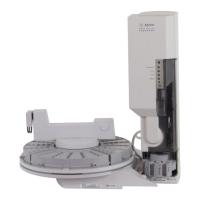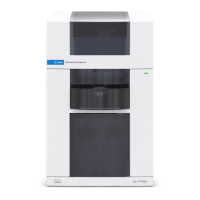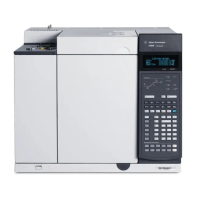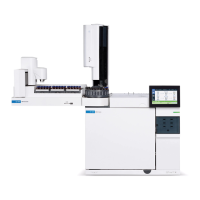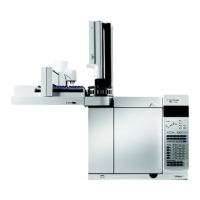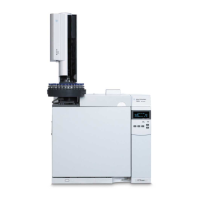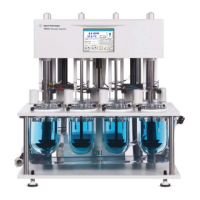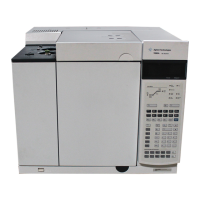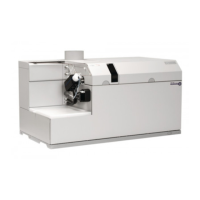
Do you have a question about the Agilent Technologies 7500 ICP-MS and is the answer not in the manual?
| Type | Inductively Coupled Plasma Mass Spectrometer (ICP-MS) |
|---|---|
| Mass Range | 2 to 260 amu |
| Ion Source | Inductively Coupled Plasma (ICP) |
| RF Generator Frequency | 27.12 MHz |
| Dynamic Range | 9 orders of magnitude |
| Detection Limit | Sub-ppt levels |
| Sample Introduction System | Standard nebulizer and spray chamber |
| Data Acquisition | Multi-channel |
| Software | Agilent MassHunter |
| Detector | Discrete dynode electron multiplier |
| Cooling | Water-cooled |
| RF Power | Up to 1600 W |
| Auxiliary Gas Flow | 0-2 L/min |
| Nebulizer Gas Flow | 0.6-1.2 L/min |
| Interface | Sampler and skimmer cones |
| Vacuum System | Turbomolecular pumps |
| Isotope Ratio Precision | <0.1% RSD |
Identifies the target audience and required background for the manual.
Outlines the manual's structure and chapter contents for effective learning.
Explains the typographical and formatting conventions used throughout the document.
Lists additional resources like hardware manuals and online help for further details.
Details the procedures for starting and closing the ChemStation application and its main window.
Explains navigation techniques using the mouse and moving between software windows.
Describes how to enable and use the command line for macro creation and customization.
Guides users through setting up software parameters and system configurations via the Configuration task.
Details how to configure sample introduction types like peristaltic pump, ISIS, or LC/GC/Laser Ablation.
Provides procedures for starting the Agilent 7500 from various states (unplugged, shutdown, standby).
Explains how to safely return the Agilent 7500 to Standby or Shutdown mode.
Describes methods for monitoring instrument status using the Control Diagram and Meter Control Panel.
Guides on tuning for optimal sensitivity using a recommended tuning solution.
Explains how to identify and reduce oxide ion signals during tuning procedures.
Provides instructions for tuning the ShieldTorch in high sensitivity mode.
Describes the automated optimization of tunable lens and voltage settings for the instrument.
Guides users through creating methods using an automated wizard, selecting application and sample types.
Explains the six available acquisition modes for method creation, with Spectrum mode as default.
Details how to set acquisition parameters for various modes like Spectrum, TRA, Time Program, and Isotope Analysis.
Explains how to modify or edit interference correction equations for elements subject to interference.
Details the process of creating a sequence using the Sample Log Table for automated sample analysis.
Explains how to check a sequence before running it for potential issues like file name conflicts or disk space.
Explains how to modify a sequence by editing the Sample Log Table or sequence options.
Describes how to create a chained sequence to run multiple sequences sequentially.
Guides on saving the chained sequence to disk with a specified name.
Explains how to run samples automatically by loading and executing a sequence.
Explains how to run samples one at a time using a chosen method, potentially for efficiency.
Describes how to view and monitor the progress of an ongoing analysis run in real-time.
Provides methods for stopping an active run from various points within the software.
Details how to display acquired spectral data and load appropriate data files for analysis.
Explains options for changing spectral display type, axis scales, and graphic modes.
Describes how to use element databases and templates to identify unknown peaks in spectra.
Explains how to display time charts from acquired data using Time Resolved Analysis or Time Program modes.
Details how to view extracted ion charts and change chart display properties.
Explains how to define integration parameters and integrate peaks in a sample for concentration values.
Explains how to create custom reports with specific information and layouts.
Explains how to create and format custom databases for analysis results.
Guides on saving report or database files as templates for reuse.
Details the process of preparing and analyzing calibration standards for quantitative analysis.
Guides on creating calibration curves using data files from analyzed standards.
Details how to set internal standards to normalize instrument response for improved accuracy.
Guides on subtracting a blank data file from sample data files to correct for background.
Explains how to obtain concentration information for elements without external calibration.
Details how to enter concentration values for calibration elements for semiquantitative analysis.
Details how to make internal standard corrections for semiquantitative analysis to compensate for matrix effects.
Guides on setting parameters for isotope ratio analysis, including mass bias correction and isotope selection.
Explains how to generate isotope ratio reports automatically or manually.
Guides on entering parameters for isotope dilution analysis, including mass bias and spike information.
Explains how to generate isotope dilution analysis reports.
Explains how to generate multiple reports for multiple data files and select report options.
Details how to select and configure report options for the DoList tool.
Explains how to edit elements, polyatomic molecules, and their properties within the database.
Details how to enter or change information about elements or polyatomic molecules using the editor.
Details essential BIOS and display settings required before software installation on Windows XP.
Guides on installing the SICL driver and configuring I/O interfaces for the instrument.
Explains how to configure Windows Firewall to enable program and port communications for ChemStation.
Details essential BIOS and display settings for Windows 2000 configuration.
Guides on installing the SICL driver and configuring I/O interfaces for Windows 2000.
Details the configuration of BootP service for network communication under Windows 2000.
Lists ChemStation menus and commands for quick reference.
Includes descriptions and equations for calibration, quantitation, and averaging.
Describes the process and calculation for dead time calibration.
Explains how to compress and decompress files for troubleshooting and archiving.
Provides precautions for connecting and installing software when using ICP-MS with LC/GC.

